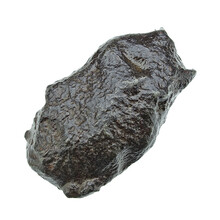The Gebel Kamil meteorite, discovered via Google Earth in Egypt, is known for its 44.8-meter impact crater and unique lizard-like texture. Read more.
Colliding with Earth
Our planet is constantly bombarded by cosmic objects, and some of these encounters leave striking traces. One of those impressive events took place about 5000 years ago: the impact of the Gebel Kamil meteorite in southwestern Egypt, near the border with Sudan.
A Modern Technological Find
The discovery of the Gebel Kamil meteorite is a testament to the digital age. In 2008, the crater was spotted by researchers analyzing Google Earth images. This led to a physical expedition to the location. The team sent to the crater was surprised by the clear and well-preserved structure of the impact site. The crater has a diameter of 44.8 meters and a depth of 15.8 meters, and research showed that it was an iron meteorite.
Mass and Composition
The name "Gebel Kamil" is the official name of this meteorite, and it is classified as an iron meteorite that does not belong to any specific group. It is one of 149 approved meteorites so classified. The total mass of the meteorite fragments amounts to about 1600 kg, ranging in size from less than 1 g to 35,000 g. A single individual of 83 kg was also found, fully covered with well-developed regmaglypts.
Lizard Skin
Striking about the fragments of the Gebel Kamil are the lizard-like texture that is frequently found on the surface of this meteorite. A typical feature that only occurs with the Gebel Kamil meteorite!

